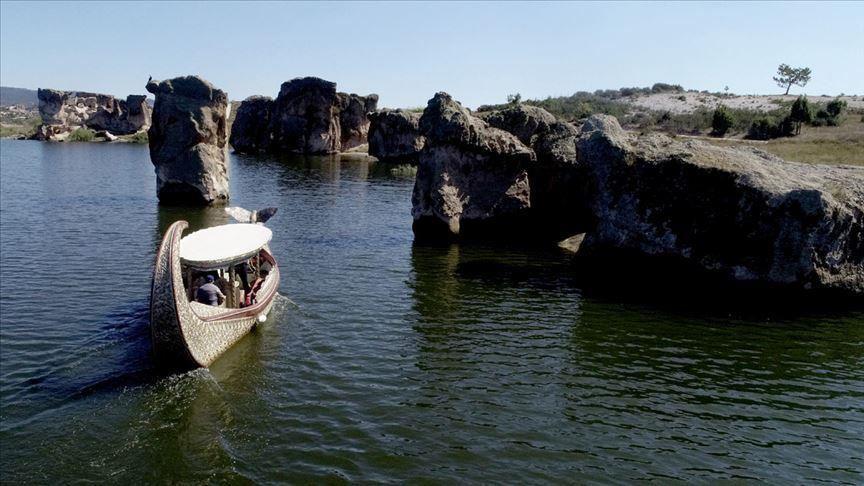
The number of tourists visiting the ancient Phrygian Valley, which covers a large area in the central Turkey expanding through the Aegean, has doubled in 2019, according to a local official.
The 3,000-year-old valley has been attracting local and foreign tourists.
Inscribed tentatively on the UNESCO World Heritage List, the Phrygia Valley spreads across the capital Ankara and central Eskişehir, as well as its neighbors in the Aegean region, Kütahya and Afyonkarahisar.
Mehmet Demirel, the mayor of Döğer district in Afyonkarahisar, said important investments have been made recently in the touristic site as a part of the tourism development projects.
While the number of tourists -- both domestic and foreign -- visiting the site in 2018 was 100,000, the number rose almost two-fold this year, Demirel said.
"We believe that this number will continue to increase in the upcoming years," he said.
The hot air balloon operations will be held in 2020 in Ankara, Eskişehir and Afyonkarahisar, he added.
According to UNESCO, Phrygia is a civilization which existed in 800 B.C. and dominated central Anatolia from the Mediterranean Sea at the south and Black Sea at north.
“Along the deep valleys in the region, castles, mounds, tumulus, necropolises, rock-cut worship places, inscriptions and reliefs, altars, cisterns, monumental rock-cut tombs, and niches have been found as testimonies of Phrygian culture,” UNESCO said stressing that other exhibits also justified the worthiness of the place.
There is also a 506-kilometers-long (314 miles) trekking and cycling path (Phrygian Road) on the site which was constructed without harming the historical milieu.
The ancient site was named “the second Cappadocia” due to its landscape.